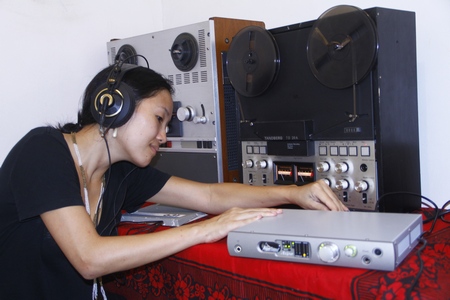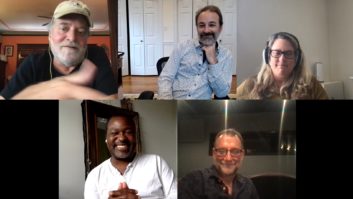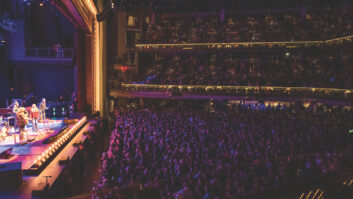
The Tanzanian Heritage Project (THP) is using Prism Sound’s Lyra Audio Interface in a unique bid to rescue and digitise the country’s tape-based music archive, thus preserving a precious musical heritage for future generations.
Rebecca Corey, co-founder and Executive Director of the Tanzania heritage Project (THP) hatched the idea for the digitisation project in 2010, with her Tanzanian friend and THP co-founder Benson Rukantabula, while Corey was at home in the US recovering from a motorcycle accident in Dar es Salaam.
“Just before leaving Tanzania, Benson had given me a few CDs of old Tanzanian music,” explains Corey. “The quality of the recordings weren’t great – they sounded as though they had been recorded from the radio on to a cassette and then transferred to CD – but the music was wonderful.” The music became a soundtrack to Corey’s recovery and she spent hours talking with Rukantabula and researching the history of Tanzanian music.
“That’s when I learned about Radio Tanzania, and the fact that pretty much all of the music recorded, from independence in the early 1960s through the mid-1980s, was all stored on reel-to-reel tapes that had never been professionally digitised,” she recalls. Corey was determined that once recovered, she would go back to Tanzania to preserve and digitise those tapes. She also wanted to raise awareness of the country’s wealth of musical heritage. “While West African music has got a fair bit of attention, East African music is virtually unheard of on a global level,” she says.
Finally able to return to Tanzania in early 2012, Corey visited the archives. “That year, we managed to purchase a Tandberg reel-to-reel machine and a Studer was donated by the British Library,” Corey explains. But due to lack of funds, the digitisation project effectively stalled for most of 2013 and 2014. “In the end, we weren’t able to negotiate a satisfactory agreement with the government radio station about future access to the digitised material,” she explains. “So we’ve shifted our focus to digitising the reel-to-reel archives of other radio stations and private collections.
As well as the Studer A67 and Tandberg TD 20A, Corey has been using Prism Sound’s Lyra Audio Interface, and Ableton Live software. “We bought the Lyra after speaking to several professional archivists and they all recommended the unit as being the best for A/D conversion on the market. We found it to be affordable for our limited budget and a great centrepiece to our DAW.”
Corey says the THP studio setup is kept “relatively simple. The key is achieving the highest quality conversion possible from the analogue signal from the reel-to-reel machine, to the digital version on the computer. We’re confident that the Lyra is capturing and converting the signal and making the most faithful copy possible.”
Ease of use has proved crucial on this project, which relies on enthusiasts. “No one on our team is a professional audio engineer or archivist,” says Corey. “We took on this project because we were music lovers who believed that this music needed to be preserved before it was too late, and because no-one else had stepped in to do it. So the fact that the Lyra is easy to use and produces incredible quality sound has made us very satisfied with its performance so far.”
Having just got the project moving again, thus far around four hours of material from 12 tapes have been digitised. Many of the tapes are in poor condition and need to be assessed and cleaned before they can be played and digitised. As Corey explains, it’s a slow, careful process. “We assess the condition of each reel to determine whether it is in good enough condition to digitise. We don’t want to attempt digitisation on a reel and end up damaging it further. Once a reel is ready, it sometimes needs to be re-wound so that the ‘pack’ of the tape is even and won’t rub against the reel flange. We minimise the number of times the reel is wound and played as much as possible, to avoid any potential damage to the tape.”
Due to the slow nature of the work, Corey estimates the process will take at least another eight to ten months of full-time work, using one Digital Audio Workstation to preserve and digitise the remaining reels. “We are continuously searching for additional reels to digitise though, so it’s really an ongoing process,” she adds.
The process has already unearthed many cultural gems, with Corey’s favourites being songs dating back to the time of the country’s struggle for independence, and just after. “At that time, the music was all about building unity, promoting peace; gaining (and then celebrating) freedom from colonisation,” she explains. “Musically, there’s some wonderful content, ranging from acoustic folk songs to Tanzania’s distinctive dance music from the late 1960s and 70s, with influences encompassing Congolese rumba guitar styles, full horn sections, and beautiful vocal harmonies.”
When the digitisation project is eventually complete, Corey plans to make the music “as widely accessible as possible to Tanzanians, particularly music students, through music schools and arts programmes. We also hope to release the material internationally, through a record label. Any proceeds from these potential releases would then go to musicians who have never received royalties from their work, and to the musicians’ health insurance scheme, jointly administered by the National Social Security Fund and the Tanzania Musicians’ Network.”
THP’s studio is located in the same compound as the Music Mayday music school, which as she explains, also organises listening and discussion sessions, seminars and workshops with elder musicians, and studio recording projects. “In this way, the digitisation is just a piece of a larger cultural revitalization effort that THP is undertaking.”
More information about the project can be found on Facebook, Instagram and at www.tanzaniaheritageproject.org.
-ends-
About Prism Sound
Founded in 1987, Prism Sound manufacture high-quality professional digital audio equipment for the International broadcast, film, music production, manufacturing and telecommunications sectors. The company’s product range includes the Prism ADA-8XR precision 8-channel converter unit, which is regularly used for music and film soundtrack projects by clients such as EMI Abbey Road, BBC, Sony, Lucasfilm and Walt Disney. Prism Sound also manufactures a range of audio test and measurement products, including the de facto standard DSA-1 handheld digital audio generator/analyser and the dScope Series III audio analyser system.
For more information: www.prismsound.com






